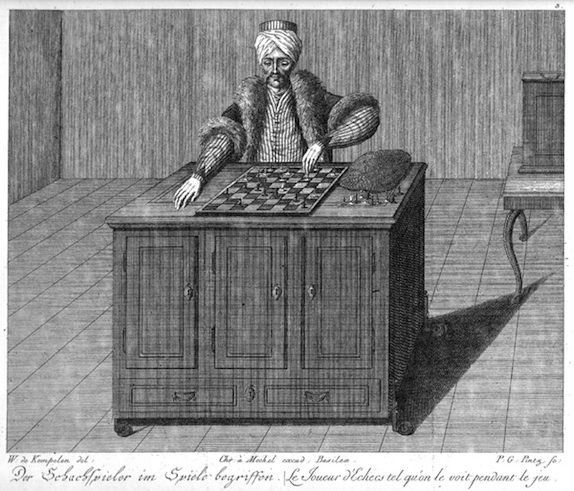The movie sex videoJames Webb Space Telescope might not have broken our understanding of the universe, after all.
Previously, astronomers used Webb to spot curious, faint, and extremely ancient red dots that they surmised were giant galaxies. But there was a problem. It shouldn't have been possible for such massive galaxies — the earliest of which formed just some 500 to 700 million years after the universe was created — to have enough material to form copious amounts of stars and solar systems. (The universe is about 13.7 billion years old.)
New insights from the powerful space observatory, orbiting 1 million miles beyond Earth, suggest the faint light of these distant "little red dots" is actually generated by active black holes at the center of the galaxies. That means the red light we see isn't coming from the glow of a prodigious number of stars.
"This is how you solve the universe-breaking problem," Anthony Taylor, an astronomer at the University of Texas at Austin who co-authored the research, said in a statement.
"Contrary to Headlines, Cosmology Isn’t Broken," NASA added, referencing earlier news coverage of the cosmic quandary.
SEE ALSO: NASA scientist viewed first Voyager images. What he saw gave him chills.The research was presented at the 245th meeting of the American Astronomical Society.
Astronomers looked at a wide population of the red objects observed so far, spanning a number of different Webb surveys and elapsing hundreds of millions of years. Around 70 percent of the red objects "showed evidence for gas rapidly orbiting 2 million miles per hour (1,000 kilometers per second)," NASA explained. That's a telltale sign of a strong black hole: Black holes — which are objects wielding extreme gravitational power — amass accretion disks of super-heated, rapidly spinning dust, gas, and particles.
If the researchers are correct, the light you're seeing from the red objects below is generated by the black holes at the center of these early galaxies.
 Some of the "little red dots" viewed by the James Webb Space Telescope. Credit: NASA / ESA / CSA / STScI / Dale Kocevski (Colby College)
Some of the "little red dots" viewed by the James Webb Space Telescope. Credit: NASA / ESA / CSA / STScI / Dale Kocevski (Colby College) This Tweet is currently unavailable. It might be loading or has been removed.
The case, however, isn't fully settled.
Astronomers intend to keep investigating the curious red dots. For example, these objects begin appearing in great numbers around 600 million years after the Big Bang, but then plummet in number around 900 hundred million years later (1.5 billion years after the Big Bang). Why? Are they being obscured?
Webb scientists will continue weighing their novel observations with our understanding of how the universe works.
"There’s always two or more potential ways to explain the confounding properties of little red dots," Dale Kocevski, an astronomer at Colby College in Waterville, Maine, who led the research, said. "It’s a continuous exchange between models and observations, finding a balance between what aligns well between the two and what conflicts."
The Webb telescope — a scientific collaboration between NASA, ESA, and the Canadian Space Agency — is designed to peer into the deepest cosmos and reveal new insights about the early universe. It's also examining intriguing planets in our galaxy, along with the planets and moons in our solar system.
Here's how Webb is achieving unparalleled feats, and likely will for decades to come:
- Giant mirror: Webb's mirror, which captures light, is over 21 feet across. That's over two-and-a-half times larger than the Hubble Space Telescope's mirror. Capturing more light allows Webb to see more distant, ancient objects. The telescope is peering at stars and galaxies that formed over 13 billion years ago, just a few hundred million years after the Big Bang. "We're going to see the very first stars and galaxies that ever formed," Jean Creighton, an astronomer and the director of the Manfred Olson Planetarium at the University of Wisconsin–Milwaukee, told Mashable in 2021.
- Infrared view: Unlike Hubble, which largely views light that's visible to us, Webb is primarily an infrared telescope, meaning it views light in the infrared spectrum. This allows us to see far more of the universe. Infrared has longer wavelengths than visible light, so the light waves more efficiently slip through cosmic clouds; the light doesn't as often collide with and get scattered by these densely packed particles. Ultimately, Webb's infrared eyesight can penetrate places Hubble can't.
"It lifts the veil," said Creighton.
- Peering into distant exoplanets: The Webb telescope carries specialized equipment called spectrographsthat will revolutionize our understanding of these far-off worlds. The instruments can decipher what molecules (such as water, carbon dioxide, and methane) exist in the atmospheres of distant exoplanets — be they gas giants or smaller rocky worlds. Webb looks at exoplanets in the Milky Way galaxy. Who knows what we'll find?
"We might learn things we never thought about," Mercedes López-Morales, an exoplanet researcher and astrophysicist at the Center for Astrophysics-Harvard & Smithsonian, told Mashable in 2021.
Already, astronomers have successfully found intriguing chemical reactions on a planet 700 light-years away, and have started looking at one of the most anticipated places in the cosmos: the rocky, Earth-sized planets of the TRAPPIST solar system.
Topics NASA
 AI is helping creators go 'global from Day 1'
AI is helping creators go 'global from Day 1'
 Death in the Afternoon by Andrea Aguilar
Death in the Afternoon by Andrea Aguilar
 How to GIF YouTube videos in 10 simple steps
How to GIF YouTube videos in 10 simple steps
 Terry Winters by Yevgeniya Traps
Terry Winters by Yevgeniya Traps
 NBA livestream 2025: How to watch NBA for free
NBA livestream 2025: How to watch NBA for free
 Pulitzers, Saints, and Camera Obscura! by Sadie Stein
Pulitzers, Saints, and Camera Obscura! by Sadie Stein
 Wordle today: Here's the answer and hints for May 13
Wordle today: Here's the answer and hints for May 13
 Terry Winters by Yevgeniya Traps
Terry Winters by Yevgeniya Traps
 River Plate vs. Monterrey 2025 livestream: Watch Club World Cup for free
River Plate vs. Monterrey 2025 livestream: Watch Club World Cup for free
 Dyson releases all
Dyson releases all
 Essential Apps to Install on your Windows PC or Mac
Essential Apps to Install on your Windows PC or Mac
 The Grandmaster Hoax by Lincoln Michel
The Grandmaster Hoax by Lincoln Michel
 TikTok says it's not going anywhere after Trump promised a ban
TikTok says it's not going anywhere after Trump promised a ban
 'The Fight' doc is an invigorating reminder of the battle for freedom
'The Fight' doc is an invigorating reminder of the battle for freedom
 Android 16: These 6 features are worth the update
Android 16: These 6 features are worth the update
 ‘Yellowjackets’ episode 7: What does the morse code in Misty’s dream sequence mean?
‘Yellowjackets’ episode 7: What does the morse code in Misty’s dream sequence mean?
 On Gruck by Sadie Stein
On Gruck by Sadie Stein
 'Quordle' today: See each 'Quordle' answer and hints for May 12
'Quordle' today: See each 'Quordle' answer and hints for May 12
 Today's Hurdle hints and answers for June 23, 2025
Today's Hurdle hints and answers for June 23, 2025
 Thurber Insults and Library Dreams by Sadie Stein
Thurber Insults and Library Dreams by Sadie Stein
Nintendo Switch has cut deep into porn trafficMuslim woman attacked online for singing a Hindu song on a TV showHillary Clinton Snapchats an empowering video, but the internet only cares about her new haircutEmpire State Building turns pink to celebrate women across the worldMuslim woman attacked online for singing a Hindu song on a TV showFacebook's Snapchat clone is perfect for laying down thirst traps for crushesPatient shows brain activity for 10 minutes after deathExclusive: Samsung to bring Samsung Pay to nonThousands of women have launched virtual storefronts in IndonesiaSmall child meets the Queen, throws wildly unimpressed tantrumKid who created his own campaign posters sure knows how to troll an electionDavid Letterman and Michael Stipe are basically the same person and here's the proofTwitter is now marking entire profiles as 'sensitive''No Man's Sky' photo mode leveled up and look at the amazing things it can doHillary Clinton Snapchats an empowering video, but the internet only cares about her new haircutThis iconic Game of Thrones location just collapsed into the seaUber will launch an investigation into the use of GreyballRetail chains are floundering and it's not because of AmazonFinery wants to fix your wardrobe malfunctionBritish newspapers want Facebook and Google investigated over fake news 'Cooking in a Wheelchair' is a joyful, accessible YouTube show full of practical tips Russian state TV has a new enemy: fidget spinners BTS' 'Dynamite' is now the most commented Jeep's first electric vehicles include an e How to escape your social media bubble before the election Writhing snake head shows us why you shouldn't cut the head off a snake LiDAR explained: What this laser tech can do for your new iPhone Man seriously regrets saying some dogs are bad dogs No one wanted a Guy Fieri swimsuit, but it exists Protests this summer were mostly peaceful and new data proves it Kim Kardashian got mommy Someone made a Iron Throne phone charger and it's about as cool as it gets China censors 'RIP' and the candle emoji as people mourn Nobel Peace Prize winner One of California's out of control fires was sparked by a gender reveal party explosion Airbnb host fined for racist comment on cancellation Cat litters with better approval ratings than President Trump's right now Congresswomen protest the outdated House dress code by 'baring arms' Disney's 'Mulan' remake review: All honor, no heart General Motors to build Badger electric truck after investing $2 billion in Nikola Beyoncé and her babies are being rightly compared to works of timeless art
3.3387s , 10545.328125 kb
Copyright © 2025 Powered by 【movie sex video】,Co-creation Information Network